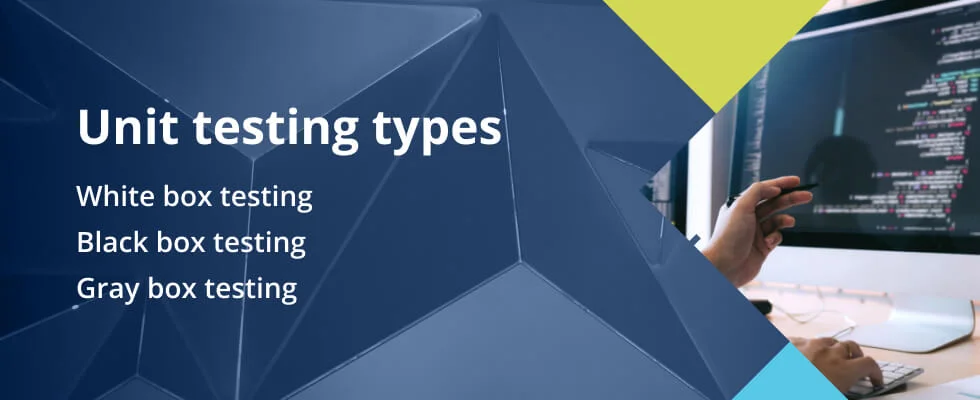
What is unit testing?
The smallest portion of software that has the ability to carry out a specific function—typically a feature, method, or module—is referred to as a “unit” in this context. Unit testing is a software testing technique that involves testing individual units or components of a program separately to make sure they operate as required. By testing these individual components early on, developers can quickly identify and fix problems before they affect the larger system, saving time and resources.
Unit testing is a software testing technique that involves testing individual units or components of a program separately to make sure they operate as required.
Unit testing was first used to support reliable coding and continuous improvement in the early phases of software development. Verifying each component was important for creating complicated structures in the early computer languages, which is where it all began. Unit testing became common as software engineering advanced. Particularly with the emergence of agile approaches and continuous integration, which depend on early problem identification to enable stable software and quick releases.
Example of a unit test in Python
Here’s a simple Python example that demonstrates unit testing. Let’s say you have a function that determines whether a given number is even. The proper operation of this function can be confirmed using a unit test.
# Function to test
def is_even(number):
return number % 2 == 0# Unit test for the function
def test_is_even():
assert is_even(4) == True, "Should be True for even numbers"
assert is_even(3) == False, "Should be False for odd numbers"
# Run the test
test_is_even()
print("All tests passed.")As a unit test in this example, test_is_even() verifies that the method is_even() returns False for an odd input and True for an even input. Before the function is used in a bigger program, this test makes sure that it operates as expected.
Types of unit tests
Unit tests may be automated or manual. Automated approaches are far more common as they are faster and more accurate, but some developers prefer a manual approach. Here are the basic types:
- White box testing, in which the functional behavior of the code is tested by developers who have written it or are familiar with the code. The purpose of white box testing is to validate execution.
- Black box testing, in which testers who are not privy to the internal functionality of the code test the user interface, inputs, and outputs.
- Gray box testing, a combination of white and black box approaches where testers are partially aware of the functionality of the code.
Unit tests typically have three stages:
- Preparing and reviewing the unit of code
- Making test cases and scripts
- Testing the code

How to perform unit testing
Unit testing is carefully examining each tiny code piece or function to make sure it operates as expected. Because the procedure is well-organized and simple, you can identify problems early on before they have an impact on the larger application. This is a detailed guide to assist you in carrying out unit testing efficiently:
- Identify the Unit to Test: Choose the particular function or technique you wish to test first. A function or a method that carries out a single action could be considered a “unit” of code.
- Write Test Cases: Create test cases describing the desired behavior for every unit. Make sure the unit can handle a variety of inputs by identifying both common and edge cases. Create test cases for standard numbers, zero as an input, and potential negative values. For example, if you are evaluating a function that divides two numbers.
- Use a Testing Framework: Select a testing framework that is suitable for the programming language you use. For example, JUnit for Java or unittest/pytest for Python. These frameworks offer systematic methods for developing, arranging, and executing your test cases.
- Write the Test Code: Write code that calls the unit (function or method) with various inputs using the framework. To determine whether the function operates correctly, the test should compare the predicted and actual outputs.
- Execute the Test Cases: Use the selected framework to run the test cases. To help you determine whether the unit behaves correctly, each test will either pass or fail.
- Analyze Test Results: Check any tests that didn’t pass to find out why. Fix any bugs in the code, make any necessary changes to the test cases, and then run them again to make sure the problems have been fixed.
Automated unit testing: faster, scalable, and continuous
Manual unit testing can be time-consuming, especially as applications grow. Automated unit testing solves this by allowing developers to write test scripts once and run them continuously—saving time, reducing errors, and enabling faster releases.
Why Automate Unit Tests?
Automating unit tests brings major benefits:
- Faster feedback during development
- Immediate detection of regressions
- Higher test coverage across edge cases and inputs
- Reduced manual effort over time
- Consistency in test execution
In Agile and DevOps workflows, automated unit testing is critical for continuous integration and continuous delivery (CI/CD). It ensures every code change is tested automatically, helping catch bugs before they reach production.
# even_check.py
def is_even(n):
return n % 2 == 0# test_even_check.py
from even_check import is_even
def test_is_even():
assert is_even(2) == True
assert is_even(3) == False
assert is_even(0) == True
To run it automatically, you can just execute:
pytest
pytest will automatically discover and run the test. This can be added to a CI pipeline using tools like GitHub Actions, GitLab CI, or Jenkins.
Example 2: Java with JUnit
// MathUtils.java
public class MathUtils {
public static boolean isEven(int number) {
return number % 2 == 0;
}
}
// MathUtilsTest.java
import org.junit.jupiter.api.Test;
import static org.junit.jupiter.api.Assertions.*;
public class MathUtilsTest {
@Test
public void testIsEven() {
assertTrue(MathUtils.isEven(4));
assertFalse(MathUtils.isEven(5));
}
}
JUnit tests like this can be executed automatically during builds using Maven or Gradle, and integrated into CI servers like Jenkins or Bamboo.
When to automate unit tests
1.When functions are stable and unlikely to change frequently
Automating tests for stable code ensures long-term reliability. Once a function is well-defined and unlikely to undergo frequent changes, writing automated tests helps catch any unintended side effects from future changes elsewhere in the codebase.
Example: A utility method like is_even(number) or a date formatting function is perfect for automation. Once correct, its logic rarely changes.
2. When the code is business-critical or high-risk
Automate unit tests for logic that directly supports your core functionality or carries financial, security, or operational risk. These areas must be protected with repeatable tests to avoid major failures in production.
Example: A pricing calculation in an e-commerce platform or authentication logic for user login should always be covered by automated tests.
3. When you’re working in a CI/CD environment
In continuous integration/continuous deployment (CI/CD) pipelines, automated unit tests serve as a gatekeeper. They run automatically on every commit or build and prevent faulty code from moving downstream. Manual testing simply can’t keep up with the speed and frequency of deployments in CI/CD environments.
Example: Teams using GitHub Actions, Jenkins, or GitLab CI can run all unit tests automatically after every code push.
4. When you want to minimize regression risks
Every time you change code, you risk breaking existing functionality. Automated unit tests provide immediate feedback if a new change introduces a bug. This reduces the likelihood of regressions and supports safer refactoring.
Example: If you refactor a payment validation method, your existing automated unit tests will catch any new logic errors right away.
In short, automated unit testing is ideal when stability, reliability, and speed matter—especially in modern development workflows where early detection and continuous quality are essential.
Benefits of unit tests
Unit tests enable software development teams to:
- Save time. Performing frequent unit tests will save time during regression testing.
- Make easier, faster fixes. It’s easier for developers to fix bugs in a unit of code when they’re still immersed in it rather than long after they have moved on to other parts of the software, or when defects are discovered during system testing or acceptance testing.
- Create more reusable code. Unit testing facilitates more modular code, making it easier to reuse.
- Lower cost. The cost of fixing issues during unit testing is much less than the cost of repairing defects found during acceptance testing or when software is in production.
- Perform easier debugging. With unit tests, only the latest changes need to be debugged when a test fails.
- Produce higher quality code. Unit testing significantly enhances code quality and helps developers find the smallest defects before moving to integration testing.
Disadvantages of unit testing
Unit testing has drawbacks that could reduce its value. Even though it’s useful for finding errors early and enhancing code quality, the following are some major drawbacks:
- Doesn’t Cover Non-Functional Testing: Only individual functions and logic are the focus of unit testing. It’s unable to evaluate non-functional elements that are essential to the success of applications in real life, such as scalability, security, or performance.
- Limited for User Interface (UI) Testing: Unit testing is not appropriate for testing user interactions or visual aspects because it focuses on code functionality. Understanding how users interact with the application is necessary for UI testing, which is outside the scope of unit testing.
- Time-Consuming for Large Projects: The development process may be slowed down by the time-consuming nature of writing and maintaining unit tests, particularly for big projects with several units.
- Limited in Detecting Integration Issues: A solid understanding of testing concepts and code is necessary for efficient unit testing. Writing relevant tests may be difficult for less experienced developers, which could lower the quality of the testing.
- Requires Skilled Developers: As unit tests tend to focus on imaginary situations, they might not accurately represent how the program will be utilized in actual use cases. This could result in unforeseen problems after deployment. You might require skilled developers to write test cases.
Unit tests are best performed continuously and frequently.
Unit testing best practices
- Make sure that unit tests are independent of one another. If one unit of code is changed or enhanced, unit test cases will not be affected.
- Test one piece of code at a time. This practice will simplify code changes or refactoring.
- Create clear and consistent naming conventions for unit tests. This will help eliminate confusion as the volume of written unit tests expands.
- Fix bugs in each unit before proceeding to the next phase of software development. Defects found during unit testing must be fixed before moving on to integration testing.
- Write tests that expose defects before fixing them. Before fixing a bug, it’s important to write or modify a test that will reliably expose the defect. That way your unit test can catch the defect in future iterations if it is not properly fixed.
- Test early and often. Unit tests are best performed continuously and frequently.
- Separate test and production code. When performing unit testing, ensure that the test code is not deployed with the source code in the build script.

Unit testing with Tricentis qTest
Tricentis qTest provides software test automation tools that help enterprises and development teams prioritize quality, develop more reliable software, and increase speed to market. qTest offers a suite of Agile testing tools designed to improve efficiency and ensure collaboration that enables teams to release the best software. With qTest, developers and testers can centrally manage open-source frameworks and commercial test automation tools for unit testing, functional testing, integration testing, exploratory testing, and many other testing protocols.
Tricentis qTest enables development teams to:
- Create better software faster. qTest optimizes and orchestrates end-to-end quality across teams, projects, and applications to accelerate the speed of each release.
- Scale automation. qTest centralizes test automation management and integrates with open-source and proprietary test automation tools.
- Improve collaboration. qTest makes developer-tester alignment easier with real-time integration for testing with Jira at both the requirements and defect levels.
- Increase speed to market. qTest supports Agile methodology by allowing teams to use QA testing tools strategically, testing early and often, and getting to market faster.
The Tricentis platform also includes solutions for test automation, performance testing, data integrity testing, smart impact analysis, and solutions for SAP, ServiceNow, Snowflake, Oracle, and Salesforce testing.